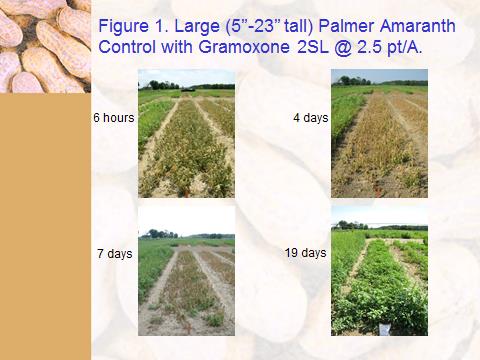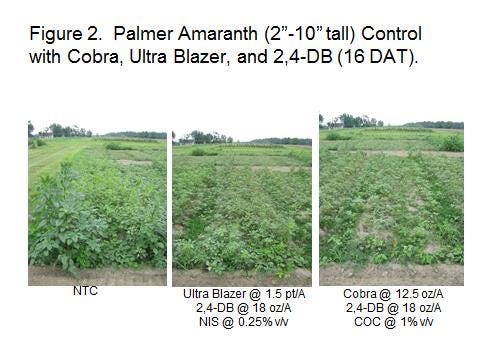June 26, 2017

Given the rainy weather patterns that have occurred over the last 60 days or so, you might be seeking revenge on escaped weeds. The truth is often painful for some to hear, so get ready: Herbicides applied to large weeds rarely provide adequate control.
Every once in a while someone gets lucky, but do you really want to spend $10 to $20 per acre on a maybe?
The definition of revenge, according to Webster’s Dictionary, is to avenge usually by retaliating in kind or degree. There is an old proverb that reads “While seeking revenge, dig two graves.” People that write proverbs are usually smarter than most weed scientists, so I hope you heed this proverb before loading up your sprayer with your favorite herbicide concoction.
As I wrote this article June 21, I was sitting in my office watching it rain again. Where I do most of my research in Ty Ty, Ga., it rained 20 days (6.73”) during the period from May 15 to June 21. Pretty tough for me to get much plot spraying done, so I can only imagine how stressful it has been down on the farm.
For the year thus far, I wish I had a dime for every time I have heard a grower or consultant say “I have to spray something.” If so, I might be as rich as my skinny, backwoods North Carolinian partner in crime (UGA weed specialist Stanley Culpepper). To quote Forrest Gump, “He has more money than Davy Crockett!” That’s another story for another time though.
Note what happened to me a few years ago when I sprayed 5” to 23” tall Palmer amaranth with paraquat (Figure 1). Thought I might have hit a homerun but ultimately struck out. For those that think that Cobra (lactofen) or Ultra Blazer (acifluorfen) are effective on big pigweed plants (2 to 10” tall), check out Figure 2. Not so great either. Soybean and cotton growers who have enthusiastically drank the new (??) dicamba and 2,4-D Kool-Aid should not expect too much from those herbicides on bigger weeds as well.
Personally, I have a very difficult time advising someone to apply a postemergence herbicide when science and experience say it is not going to work. Spraying big weeds might make you feel good because you are doing something, but in reality not much is being accomplished. On the upside, depending upon the herbicides used and when they are applied, you might be able to have an influence on weed seed production. On the very downside, spraying large weeds with an ineffective dose of a herbicide is a great way to nudge a population towards resistance! You and I do not need any more of that for sure.
If you find yourself in a situation where your weeds have gotten out of hand, you might want to consider other alternatives to revenge spraying. These could include hand-weeding, cultivation, mowing (especially in peanut), applying herbicides (paraquat, glyphosate) in a nonselective applicator (rope-wick, roller, etc.), or fast-forwarding to your favorite beach vacation.
Mother Nature frequently deals us a bad hand. In some cases, tools are available to deal with it. Unfortunately, revenge spraying of large weeds is not a reliable solution to our recent wet weather weed woes.
As always, good weed hunting!


About the Author(s)
You May Also Like






